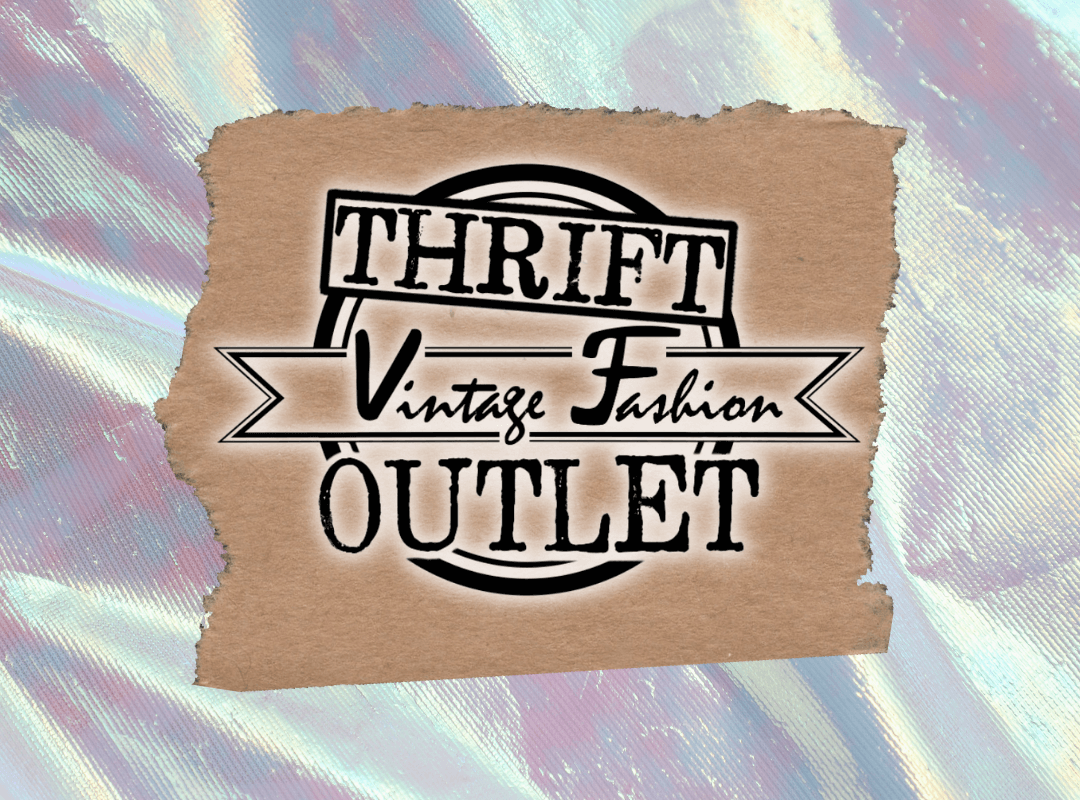
According to its Oxford English Dictionary definition, gentrification is a “process whereby the character of a poor urban area is changed by wealthier people moving in, improving housing, and attracting new businesses, typically displacing current inhabitants in the process. The process of making someone or something more refined, polite, or respectable.”
The gentrification process is relatively easy to spot in terms of physical cities and neighborhoods. Think about the downtown area of any major city, for example, where you often find trendy new shops, restaurants, and luxury apartments that have popped up in typically low-income or impoverished areas in an effort to “clean” them up and make them more appealing in order to attract new residents and customers.
But how does the concept apply to something less concrete and more intangible–something like the act of thrift shopping? How has thrifting become gentrified? And why? What has made this possible? Why should we pay attention? And is there anything that we can do to change the gentrification of thrifting?

A Brief History
The conversation about the gentrification of thrifting has to begin with its development and has to include the initial stigma surrounding the practice. Why? Because everything that becomes gentrified was once stigmatized.
Around the 18th and 19th centuries, the United States was in the midst of the Industrial Revolution, a historical period characterized by economic changes and technological advances that impacted a variety of industries, including agriculture, transportation, energy, and textile production.
Modern societies shifted from agrarian economies to industrial economies dominated by machine manufacturing. This extreme economic shift caused a fundamental change in the way people worked, which inevitably impacted the ways people lived.
In relation to the fashion industry, machines like the cotton gin and the spinning jenny allowed clothing to be mass produced because it was now cheaper and faster to make and more affordable for consumers to purchase. However, as a result of its affordability, people began to view pieces of clothing as disposable, simply because it was easier and cheaper to replace them than it had been in the past.
But not everyone in society had that luxury. The Industrial Revolution sparked migration from rural areas to big cities, which became dirtier and more crowded. It also created a division of labor that widened the wealth gap between the rich and the poor. Those who owned businesses and capital accumulated wealth much faster than their workers, who were often paid very little. As a result, industrialization caused widespread poverty and class division, especially in big cities. And as the wealth gap widened and class division increased, so did the need for second-hand stores.

Thrifting as a Necessity
However, people associated charity with poverty and second-hand shopping with uncleanliness, especially if certain groups of people had owned them previously. There was a classist, xenophobic, and often antisemetic stigma around thrift shopping. For example, in the 19th century, Jewish immigrants faced discrimination in the workforce and often sold used clothing on the street. But even then, it was difficult to sell these clothes outside of their own communities, because of anti-semitic and xenophobic sentiments. In 1884, for instance, the Saturday Evening Post published a satirical short story called “The Blue Silk,” written by Percy Herbert. In the story, the protagonist, Louisa, buys a pre-owned dress from a Jewish woman in a thrift store, despite warnings that buying secondhand is classless and unsanitary. She wears the dress to a party and another girl recognizes it as one that she had previously owned, and Louisa is teased and tormented for wearing used clothing. Even further, Louisa and her entire household develop smallpox because the store has been contaminated with the virus.
This story implies to contemporary readers that wearing other people’s clothes can increase the risk for disease and also adheres to the xenophobic and anti-semetic stereotype that labeled Jewish people as “diseased.”
Even though people in the modern developed world no longer have to worry about contracting smallpox like Saturday Evening Post 19th century readers, the discriminatory sentiments surrounding second-hand shopping did not disappear. The idea of a local Goodwill still conjures a different image of wealth and class today than the idea of an expensive, high-end clothing store, though that is difficult to acknowledge and admit.

Thrifting as a Trend
Fast forward to today. Thrift shopping is more popular than it has ever been and the second-hand shopping industry continues to grow in wealth. The 2023 ThredUp Resale Report estimates that the global secondhand market will double and reach $350 billion by 2027. Further, thrift shopping as a practice faces less stigma than ever before. The Berkeley Economic Review identifies three factors responsible for this change in attitude:
- The fast fashion industry has been under more scrutiny for its unethical practices and unsafe working conditions. See: The 2013 Rana Plaza collapse in Bangladesh.
- Younger generations are more concerned about climate change and the effect of fast fashion on the environment.
- Social media pressures users to keep up with always-changing trends, and influencers popularize thrift shopping as a way to stay on top of trends without breaking the bank.
If the fast fashion industry endangers its workers, plays such a big role in the destruction of the planet, and urges consumerism, then it’s a good thing that more people are buying second-hand, right?
Not necessarily.
Referring back to its definition and the initial example, gentrification may make an area look nicer, but there’s always a catch. It’s a process in which “the character of a poor urban area is changed by wealthier people moving in, improving housing, and attracting new businesses, typically displacing current inhabitants in the process.”
To put it simply, when new residences and businesses are added to the area, its value increases, but the incomes of the area’s current residents and business owners don’t. Eventually, people who live and work in the area for its affordability can no longer afford to live and work there. Armed with new establishments and a “cleaner” image, the gentrified area thrives, while its initial residents and business owners do not.
The same goes for thrifting. It does good for the planet overall by reducing textile waste, preserving resources, and helping shoppers save money. But it becomes problematic when consumers get caught up in the glamor of thrifting and–just like with fast fashion–begin to over consume and impact the availability of second-hand clothing for those in need. In fact, influencers have faced criticism for thrifting unsustainably and buying more clothes than necessary just for the purpose of buying them. This is the same cycle that fast fashion encourages.
Just like any trend, as thrifting has become more popular, the demand for second-hand clothes has increased. Higher demand causes thrift stores to raise their prices, which wealthier customers will pay in order to stay with the trend. But paying higher prices is often not an option for people in need, who buy second-hand out of necessity rather than the desire to follow a trend, and who faced scrutiny for wearing pre-owned clothes before it was cool.
What Now?
If fast fashion is harmful and so is thrifting, then what’s left? Are we forced to remain trapped in a vicious cycle? Or choose between the lesser of two evils? As Terry Nguyen writes in Vox, “There’s a lot of rage directed at individuals rather than institutions… It’s easier to point fingers at visible, seemingly well-off people–who have the means to go to thrift stores and buy up heaps of clothes without batting an eye–and ignore the mechanism that makes this a desirable act.” The racist, classist, xenophobic capitalist system that we live in is to blame for the cycle that causes lower-income communities and people in need to suffer regardless. And that is where we should place it. As for how to get out of the cycle and correct the damage it’s done? We’re not sure, but holding space for conversation is as good a place to start as any.
Pin it for later!







